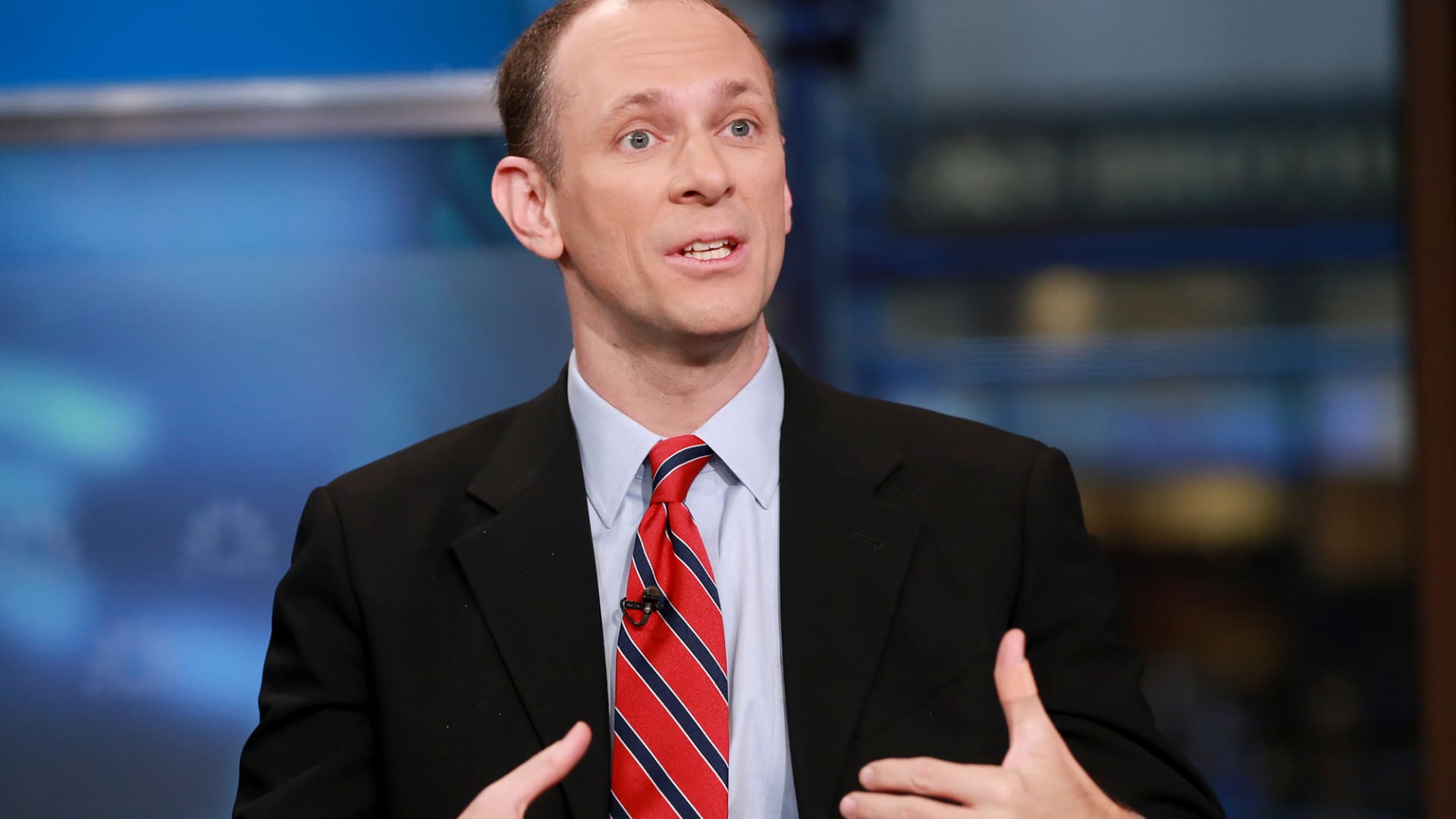The latest batch of economic data shows positive developments on the inflation front, but the Federal Reserve’s job is not over yet, Chicago Federal Reserve President Austan Goolsbee said.
Goolsbee, who succeeded Charles Evans in the president role earlier this year, is a member of the Federal Open Market Committee, which sets the federal funds rate.
“When you see the producer prices coming in as big negative numbers and you see these negatives on retail sales, you don’t want to overreact to short-run news, but it feels like that’s moving in the right direction,” he said on CNBC’s “Squawk Box” Friday to Steve Liesman.
Data on advanced retail sales released Friday morning showed consumer spending slowed in March amid concerns related to the bank crisis and potential for a recession. The data showed a 1% decline in March, which is a larger fall than the 0.5% expected by economists polled by Dow Jones. March marked the biggest month-over-month fall since November.
Excluding autos, retail sales fell 0.8% in the month,. That’s also a larger drop than the 0.4% analysts anticipated.
On Thursday, the March producer price index, a measure of prices paid by companies, declined 0.5% from the prior month, despite economists expecting prices to stay the same. Excluding food and energy, the index shed 0.1% from the prior month, while economists estimated a 0.2% month-to-month increase.
Investors saw that data as building on the March consumer price index report released Wednesday. The CPI showed consumer prices were up 5% from the same month a year ago, the smallest year-over-year increase seen in nearly two years.
Still, he noted there’s “clear stickiness” in some areas of pricing. And with current economic conditions, Goolsbee said the U.S. could experience a recession.
“There’s no way you can look at current conditions around the world and in the U.S. and not think that some mild recession is definitely on the table as a possibility,” Goolsbee said.
The data this week has bolstered hopes of those predicting the Fed could change course on its interest rate hike campaign. The central bank has raised interest rates in a bid to cool inflationary pressures, but Goolsbee warned against following “lagging” indicators like wages.
“The one thing that I think we’re spending too much time looking at is wage growth as an indicator of prices,” Goolsbee said. “There’s research out by two Chicago Fed researchers reflecting a longer tradition of research that shows wages do not serve as a leading indicator for price inflation. They’re a lagging indicator.”
“So when people are looking at what’s happening to wages now, that’s more reflective of what happened to prices six months ago,” he added. “I think we want to keep our eye on the price series, not on the wage series.”
Goolsbee said that the stress in the financial sector following the industry crisis prompted by the closure of Silicon Valley Bank last month can help do the work that monetary policy typically does. The potential for a credit crunch should also be watched, he said.






